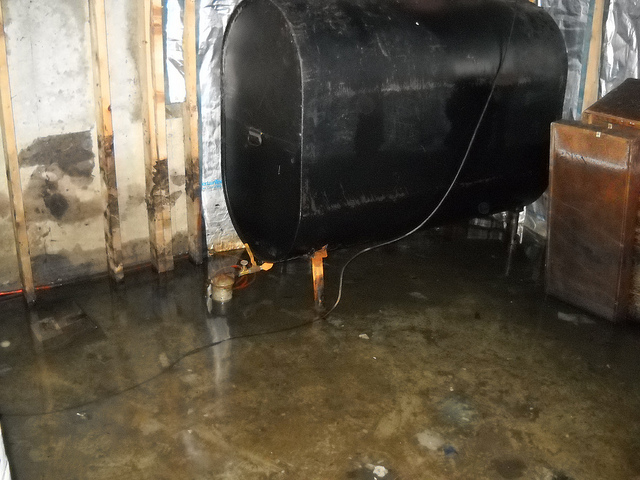Maintaining your oil storage tank is an important part of keeping your Edgewater, MD home warm in the fall and winter. Stay warm this season by following these four heating oil storage system tips.
Inspect the Oil Storage Tank Frequently
Oil leaks like the one pictured above can be costly, so the first step to maintaining your oil storage tank is inspecting it regularly. A visual inspection twice per month can alert you to small issues that might become major problems down the road.
First, check to make sure the tank’s legs or stand are intact and undamaged. Next, make sure the tank doesn’t show signs of dents, wet spots, or rust. Look around the tank to check for drips or leaks, and make sure the fuel gauge operates properly.
Make Sure the Vent Pipe Is Clear
Keeping the vent pipe clear and secure is critical to maintaining your oil storage tank. Vent pipes are prone to water and snow entry, dirt and debris clogs, and insect nests, so it pays to keep a close eye on them. Screen or cap your vent pipe to keep out water, dirt, and pests, but continue to inspect and clean it as necessary.
Replace the Tank When Necessary
Most oil storage tanks have a lifespan of about 15 years, so prepare to replace your tank when it approaches that age. If you’ve lost track of how old the tank is or if you move into a home with no clear records of the tank’s age, it’s better to be safe than sorry. Keep in mind that temporary fixes for an aging tank aren’t always the best idea, and it’s usually better to replace than repair an old tank.
Track Household Oil Consumption
Just because you can’t spot a leak, that doesn’t always mean you don’t have one. Track how much oil you receive and when, since a spike in oil consumption can point to an oil leak.
Is it time you replaced your aging oil storage tank? Call the heating oil pros at Griffith Energy Services today: 888-474-3391.
Image via Flickr by Mass. Department of Environmental Protection




